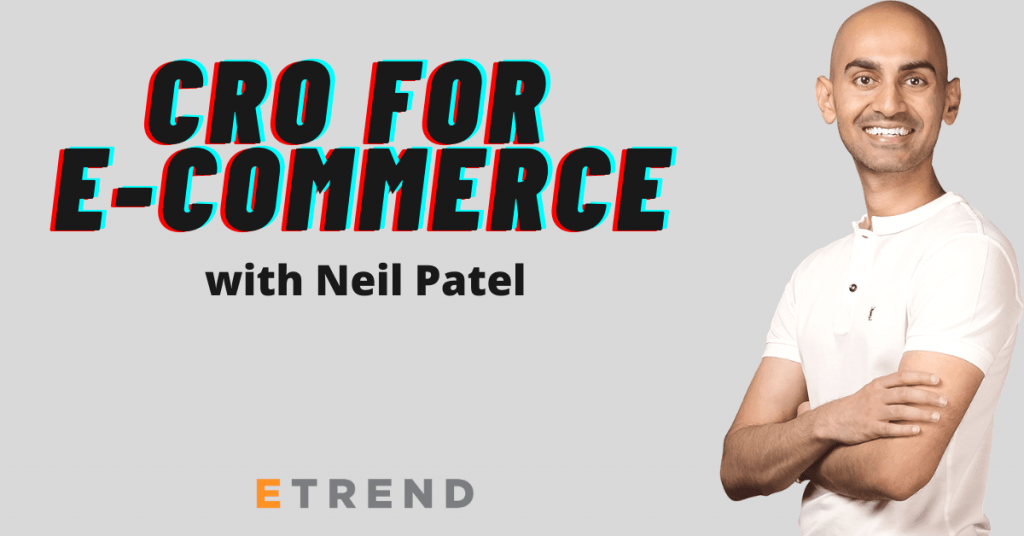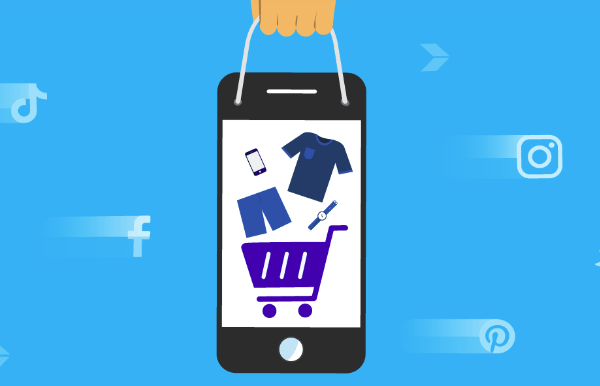When it comes to e-commerce (or lead gen for that matter) conversion rate optimization is at the top of priorities to build a successful business. Conversion rate optimization, (CRO) is the practice of increasing the percentage of users who perform a desired action on a website. Desired actions can include purchasing a product, clicking ‘add to cart’, signing up for a service, filling out a form, or clicking on a link that provides a valuable action for the merchant.
Conversion rate optimization is important because it allows you to lower your customer acquisition costs by getting more value from the visitors and users you already have. By optimizing your conversion rate you can increase revenue per visitor, acquire more customers, and grow your business.
Today, we have Neil Patel with us. Neil Patel is co-founder of Crazy Egg, Hello Bar and KISSmetrics. He helps companies like Amazon, NBC, GM, HP and Viacom grow their revenue. Neil also acquired UberSuggest, an incredible keyword tool for research that we strongly endorse as we use it ourselves.
Neil recently released his free conversion rate optimization course, CRO UNLOCKED, so today we’ll learn a bit more about that and talk CRO.

Q: Neil, thanks for taking the time to do this interview with us. As someone who’s in the e-comm space, what is the most exciting thing you’re seeing in the space right now that companies are finding success in?
A: It’s definitely an exciting time for e-commerce. The pandemic made it so a lot of people who weren’t typically buying online starting doing so and this has opened up a lot of opportunities for e-commerce businesses looking to reach a wider audience. What I think is most impactful now that e-commerce shops should be doing is focusing on a more personalized way of communicating with people. The more that consumers feel comfortable buying online, the more they will buy — and this is especially true for people who are now buying online for the first time.
Q: What trend do you see really taking shape in the next 5 years that merchants aren’t really paying too much attention or executing on today?
A: Exactly what I am mentioned above: a lot of e-commerce brands aren’t focusing enough on making a true human connection with their customers. They are either not spending any time with the customer service aspect or they are automating it to the point where it feels very robotic for the consumer. Once they are able to create a more fluid, personal connection with their customer base, they will see the lifetime value of their customers go up and they’ll also benefit greatly from word-of-mouth referral business.
Q: Putting focus on CRO, which is our topic for today, what is the one thing you’re still surprised that companies aren’t optimizing for in 2021?
A: I see a lot of companies out there that aren’t testing the different steps of their funnels. They try to focus on macro fixes as opposed to micro-optimizations. When a company is able to break down the buyer journey into the micro stages all across the funnel, they are able to optimize different points of that journey. All of those micro-conversions lead to a much larger macro-conversion at the end of the funnel. It’s important for businesses to realize this and to understand that optimizing the micros will help them better understand their audiences. By doing this, they can segment easier and by doing so, their lead nurturing strategy will produce much better results because they will be able to provide much more value to people at different stages of their journeys.
Q: If you have to choose the top 3-5 most important elements of CRO to recommend for e-comm sites to test, what would they be?
A: It really depends on each and every site and audience. Something that works well with one site might not work well for another. However, there are strategies that people should focus on. First, actually dig deep and understand your ideal customer. Too many e-commerce sites want to sell to everyone and don’t build their ideal customer. Figure out who your ideal customer is. Next, create content that delivers value to your ideal customers. You don’t want to just blast the same promo content to everyone that opts into your newsletter. You want to break down your audience into segments based on where they are on their customer journey. This way, you will provide more and more value. And finally, as mentioned before, work on micro-conversions. Simply jumping onto your landing page and switching the color of your “buy now” button isn’t going to deliver game-changing results. You need to break down the whole funnel into different stages and test new ways to optimize each of those stages. And once you do move the needle and improve one of the stages, test and optimize even more. CRO has no end.
Q: A/B testing is crucial for CRO, at what point during a test do you make a call when there is a winner? Is it time-based? How often should you be testing the same element before making a final call?
A: It depends a lot on traffic. The more traffic you have the faster you’ll be able to find your winner. But you should wait a couple of weeks, even if you have a lot of traffic. If I am testing copy, for example, on a product page, I will run a test for 2-3 weeks and see which version does better. From there, I will run another test against a newer version. I love testing. I love to figure out what works the best. But even when I find something that works very well, I will continue testing different things to keep working toward a higher conversion rate.
Generally speaking, you’ll want statistical significance.
Q: Does CRO mostly center around design, funnels, or an all around start to finish design on both fronts? If so, where do you start?
A: Start from the very top of the funnel. CRO is all about testing the entire funnel broken down into different stages. And this includes everything involved. You can test the design, the copy, the images, the buttons, the colors, etc. There are countless different things that can be tested when it comes to CRO and that’s where a lot of companies fail. They don’t test enough. Or, they start testing but don’t have the patience or understanding that it’s an endless process. The companies that win are always testing.
Q: We know the conversion rate avg, based on recent findings is around 2.35%, is there a rate you’re personally satisfied with or think that should be the goal for any given project, in e-commerce?
A: Personally, I am never satisfied with conversion rates because I know I can always make tweaks that can make a difference. Even if the difference is 5%, that’s a difference. That’s why I love CRO. It’s a process that should never be looked at as a momentary/temporary project. It’s a strategy that should be considered an everlasting part of your growth strategy.
Q: Thanks so much for your time. Is there anything else you’d like to add? Let us know where people can find your CRO course and where to download or find more information!
A: The key is patience. Be patient! Don’t expect amazing results immediately and don’t be satisfied even when you see a positive change. Know that you can always improve the results. Once you accept that CRO is a permanent part of your marketing machine, you’ll become obsessed like me. And when that happens, the real fun starts because it becomes a series of exciting challenges. You’ll want to keep increasing your CRO. You’ll want to see which test wins. You’ll want to keep optimizing for success. I assure you that once you start, you’ll never want to stop.
Need help with your marketing? Check out my ad agency, Neil Patel Digital.


